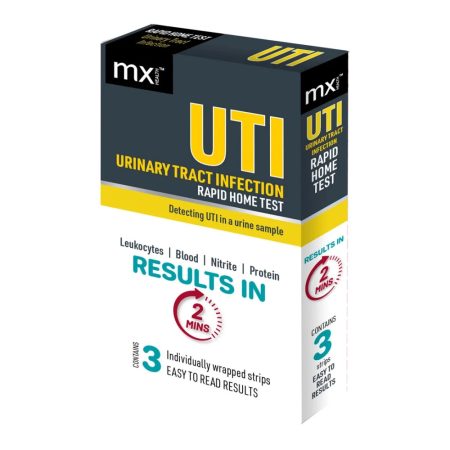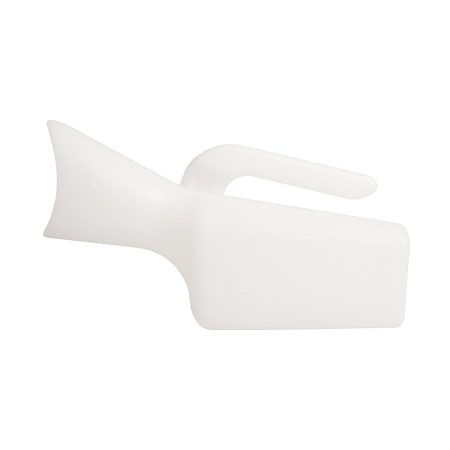Ensuring Accuracy with Urinalysis Test Strips: Precautions and Guidelines

Are there any specific precautions or guidelines for using urinalysis test strips to ensure accurate results and interpretation of test outcomes?
Introduction to Urinalysis Test Strips
Urinalysis test strips are an essential tool for monitoring various health indicators, from glucose levels to kidney function. To ensure accurate results, it is crucial to understand both the preparation and the proper usage of these strips. Before conducting a test, it’s important to adhere to specific hygiene practices and to choose the correct type of test strip for your specific needs. The accuracy of urinalysis largely depends on following the correct procedure, which involves immersing the strip in a urine sample for a precise duration and then accurately interpreting the colour change against a provided chart.
However, several factors can influence the reliability of these tests. For instance, improper storage or using expired strips can lead to inaccurate readings. Environmental factors like humidity and temperature also play a role. It’s essential to store the strips in a cool, dry place and to use them before their expiry date. Furthermore, understanding the limitations of home testing compared to professional laboratory analysis is crucial. While home tests offer convenience and immediate results, certain conditions may require confirmation through more sophisticated laboratory methods. As such, urinalysis test strips should be used as a preliminary screening tool, with any concerning results followed up with professional medical advice.

Understanding Urinalysis Test Strips
Composition and Function
Urinalysis test strips are designed with a unique composition, utilizing a series of chemically treated pads that react and change color when exposed to urine. Each pad on the strip is impregnated with specific chemicals that are sensitive to certain substances or changes in the urine, such as glucose, protein, pH levels, and blood. These reactions provide a visual representation of the urine’s composition, which is then compared to a color chart for interpretation. The accuracy of these strips hinges on the precise chemical formulation of each reactive pad, making them an invaluable tool for quick and efficient health assessments in both home and clinical settings.
Range of Tests Performed
Urinalysis test strips are versatile diagnostic tools capable of evaluating a range of health indicators. They can measure levels of glucose, indicating diabetes management; protein, pointing to kidney conditions; and leukocytes, signifying infections. The strips also assess ketones for monitoring conditions like diabetes, bilirubin suggesting liver function issues, and blood, which could indicate infections or kidney problems. Additionally, they provide vital information on urine pH, which helps in understanding the body’s overall metabolic state, and specific gravity, shedding light on hydration levels and kidney function. This wide array of tests makes urinalysis strips a comprehensive tool for initial health screening and monitoring various medical conditions.
Preparing for a Urinalysis Test
Ensuring the accuracy of urinalysis test results begins well before the actual testing process. The preparation phase is crucial for reliable outcomes.
Before the Test
- Maintaining strict personal hygiene is vital to prevent contamination of the urine sample. This includes cleaning the genital area thoroughly before sample collection. Additionally, it’s recommended to use midstream urine, which means starting to urinate and then collecting the sample midway through, to avoid impurities that might be present at the beginning or end of urination.
Selecting the Right Test Strips
- Choosing the appropriate urinalysis test strips is a critical step. Always check the expiry date of the strips, as expired strips can yield inaccurate results. It’s also important to select strips that are designed for the specific health indicators you’re monitoring, whether it’s for diabetes, kidney health, or other conditions. Proper storage of the strips – in a cool, dry place – is equally important to maintain their efficacy.
Conducting the Test Accurately
Accuracy in urinalysis testing hinges on proper technique and awareness of common pitfalls.
Step-by-Step Testing Procedure
- To conduct the test, first, ensure hands are clean. Dip the test strip into the urine sample for the time specified in the instructions, usually a few seconds. Remove the strip and gently tap off any excess urine. Hold the strip horizontally to prevent mixing of chemicals from different pads. Compare the color change of the strip to the color chart provided, ideally in natural light, within the timeframe specified for each test parameter.
Common Errors to Avoid
- Several common errors can compromise the accuracy of test results. These include over-saturating the strip with urine, not adhering to the specified waiting time for reading results, and using strips that have been exposed to moisture or extreme temperatures. To avoid these mistakes, follow the instructions precisely, handle the strips with dry hands, and store them in a suitable environment.
Interpreting the Results
Understanding Colour Changes
- After dipping the test strip in the urine sample, each reactive pad will change color according to the concentration of the specific substance it tests for. To interpret these changes, compare the strip to the color chart provided with the kit. It’s essential to do this under good lighting and within the time frame specified for each parameter, as colors can continue to change over time.
Factors Influencing Test Results
- Several external factors can influence the accuracy of test results. Variations in lighting can affect color perception, and the timing of the reading is critical – too early or too late can lead to misinterpretation. Additionally, certain medications, dietary factors, and the specific gravity of the urine can alter test outcomes. Users should be aware of these factors and consider them when interpreting results, especially in cases of unexpected or abnormal readings.
Maintaining Test Strip Integrity
Proper Storage and Handling
- Urinalysis test strips must be stored in a cool, dry place, away from direct sunlight and moisture. The container should be tightly sealed after each use to prevent exposure to air and humidity, which can degrade the reactive chemicals on the strips. It’s also important to handle the strips with clean, dry hands to avoid contamination.
Shelf Life and Expiry
- Paying attention to the shelf life and expiry date of the test strips is crucial. Expired strips can produce inaccurate results due to the breakdown of reactive chemicals over time. Always check the expiry date before use and replace any outdated strips. Additionally, if the strips show any signs of discoloration or damage, they should be discarded, as this indicates potential degradation.

Advanced Considerations
Navigating the evolving landscape of urinalysis testing involves understanding the latest technological advancements and differentiating between home and professional testing methods.
Digital Integration and Smart Technology
- The integration of digital technology in urinalysis has revolutionized the way test results are interpreted and recorded. Smart urinalysis test strips, coupled with mobile apps, can provide more precise readings, track changes over time, and even offer insights and recommendations. These advancements enhance user experience and accuracy, making self-monitoring more efficient and reliable.
Professional vs Home Testing
- While home urinalysis tests offer convenience and immediate results, they are generally less comprehensive than professional laboratory tests. Laboratory analysis can detect subtler chemical changes and offer a broader range of tests, which can be crucial for diagnosing and monitoring certain medical conditions. It’s important to understand that home tests are best suited for preliminary screening and routine monitoring, whereas professional testing is necessary for a more in-depth health assessment.
Conclusion and Best Practices
In conclusion, accurate urinalysis testing hinges on several best practices: choosing the right test strips, ensuring proper storage and handling to maintain their integrity, and closely following the testing procedure for correct usage. It’s crucial to interpret the results within the specified time frame and under appropriate lighting conditions, while also being mindful of external factors like medications and diet that can influence outcomes. Remember, these tests are most effective as preliminary screening tools, and any concerning results should be followed up with professional medical advice. Staying informed about advancements in digital urinalysis technologies can also enhance the accuracy and utility of these tests in both home and clinical settings.
































